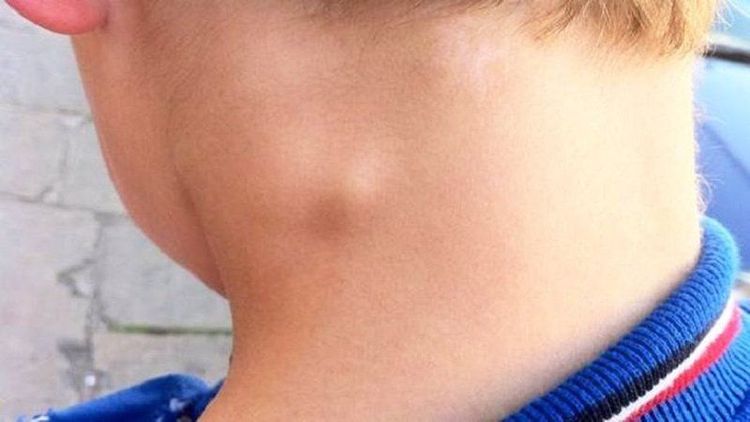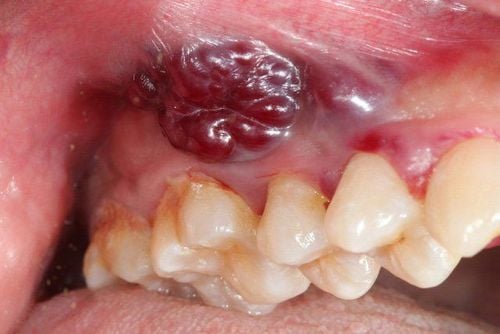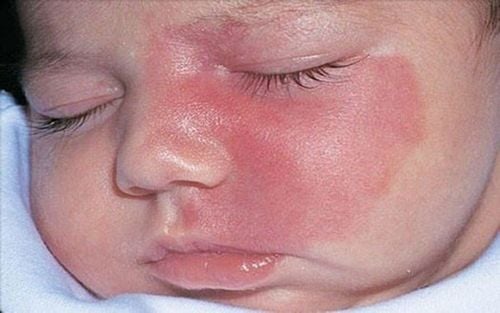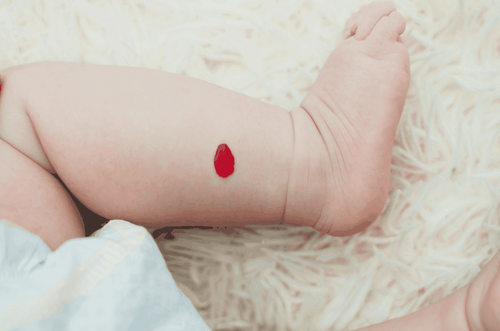This is an automatically translated article.
Hemangiomas and lymphomas are both benign noncancerous tumors that are more common in young children. Tumors often appear on the skin in common locations such as the face, head, neck... They can cause damage to surrounding organs. Therefore, they will be recommended surgically removed to avoid affecting the body's aesthetics as well as unnecessary influences related to daily life.
1. Removal of hemangiomas less than 5cm . in diameter
1.1. Hemangiomas are a collection of extra blood vessels and are often one of the most common skin problems in children under 1 year of age. Usually hemangiomas will not appear at birth, but may appear two months after birth. For babies who have it at this time it is called neonatal hemangioma. Hemangiomas are usually painless unless the site of the tumor is ulcerated.
If the hemangioma in a child is red, it is a tumor in the outermost layer of skin. If it is green, it means that the tumor is deep or under the skin. Many children can have two forms at once called mixed hemangiomas. Hemangiomas can appear anywhere on the body.
Neonatal hemangiomas can develop over several months and rarely continue to grow beyond one year of age. The hemangioma will then begin a phase of gradual disappearance (regression). This stage can last from 3-12 years. About 50% of hemangiomas disappear by the time the child turns 5 years old and 70% have completely disappeared by the time the child turns 7 years old. Although most hemangiomas will gradually disappear, the skin may not return to normal completely. The sequelae that can be left are red areas of the skin, changes in texture, excess fat or protruding hemangiomas that will often leave scars on the body.

U máu có thể xuất hiện ở mọi nơi trên cơ thể trẻ
In addition, accompanying hemangiomas will have conditions such as bleeding and sores.
Bleeding: If the skin above the hemangioma is accidentally injured, it may bleed. You can press on the wound for 5-10 minutes to stop the bleeding. However, if in case of heavy bleeding (which is very rare), it is necessary to take the child to the emergency room immediately. Sores: If there is brown or yellow substance in the skin with hemangioma and it causes pain to the child, then this site has an ulcer. This sore will leave a scar and must be treated promptly. 1.2. Hemangioma removal
Although some hemangiomas don't require treatment, other hemangiomas that can cause problems with vision, breathing, eating, or body deformities need treatment. treated with surgery.
For infants with multiple hemangiomas (multiple hemangiomas) in addition to surgical removal of the tumor, the child should be examined for internal organs for damage or other problems such as hypothyroidism.
2. Lymphoma surgery less than 5cm . in diameter
2.1. Lymphoma Lymphoma is a malformation of the lymphatic system. The disease occurs at any age and anywhere on the body. However, 90% of cases occur in children under 2 years of age and are common in the head and neck region. Lymphoma can be due to birth defects and is diagnosed antenatally during fetal life through ultrasonography. Autologous lymphangiomas usually appear after trauma, inflammation, or lymphatic obstruction.

U bạch huyết thường xuất hiện ở vùng đầu, cổ
The extent of lymphoma usually depends on the size and depth of the lymphatic vessels. Cavernous lymphangiomas are commonly seen in newborns (occasionally in older children). This lesion is usually located deep under the skin and creates a protruding mass on the skin surface, most often in the neck, tongue and lips ranging in size from a few millimeters to less than 5 centimeters (these are cystic and each cystic lymphangioma). u can have one or more cysts). Lymphoma lesions are usually painless or mildly painful.
2.2. Lymphoma resection Lymphoma will be diagnosed based on clinical examination, ultrasound and cytology of tumor aspiration. The disease can cause a number of complications such as bleeding, recurrent cellulitis, and lymphatic leakage. Therefore, in cases where the lymphoma affects the aesthetics as well as causes damage to the vital organs (eg, respiratory failure due to the tumor compressing the airways) or can cause complications, it will be indicated. surgical removal of the lymphoma.
After surgical removal of cystic lymphangioma may experience some complications due to structural damage to the neck organs, infection and recurrence. Therefore, the surgical procedure must be prescribed by a specialist and carefully examined to reduce the possibility of complications.
To register for examination and treatment at Vinmec International General Hospital, you can contact Vinmec Health System nationwide, or register online HERE
recommended video:
Screening Fetal - Healthy baby is born
SEE MORE
Diagnosis of lymphoma by ultrasound Is hemangioma in children dangerous? Common types of subcutaneous hemangiomas













